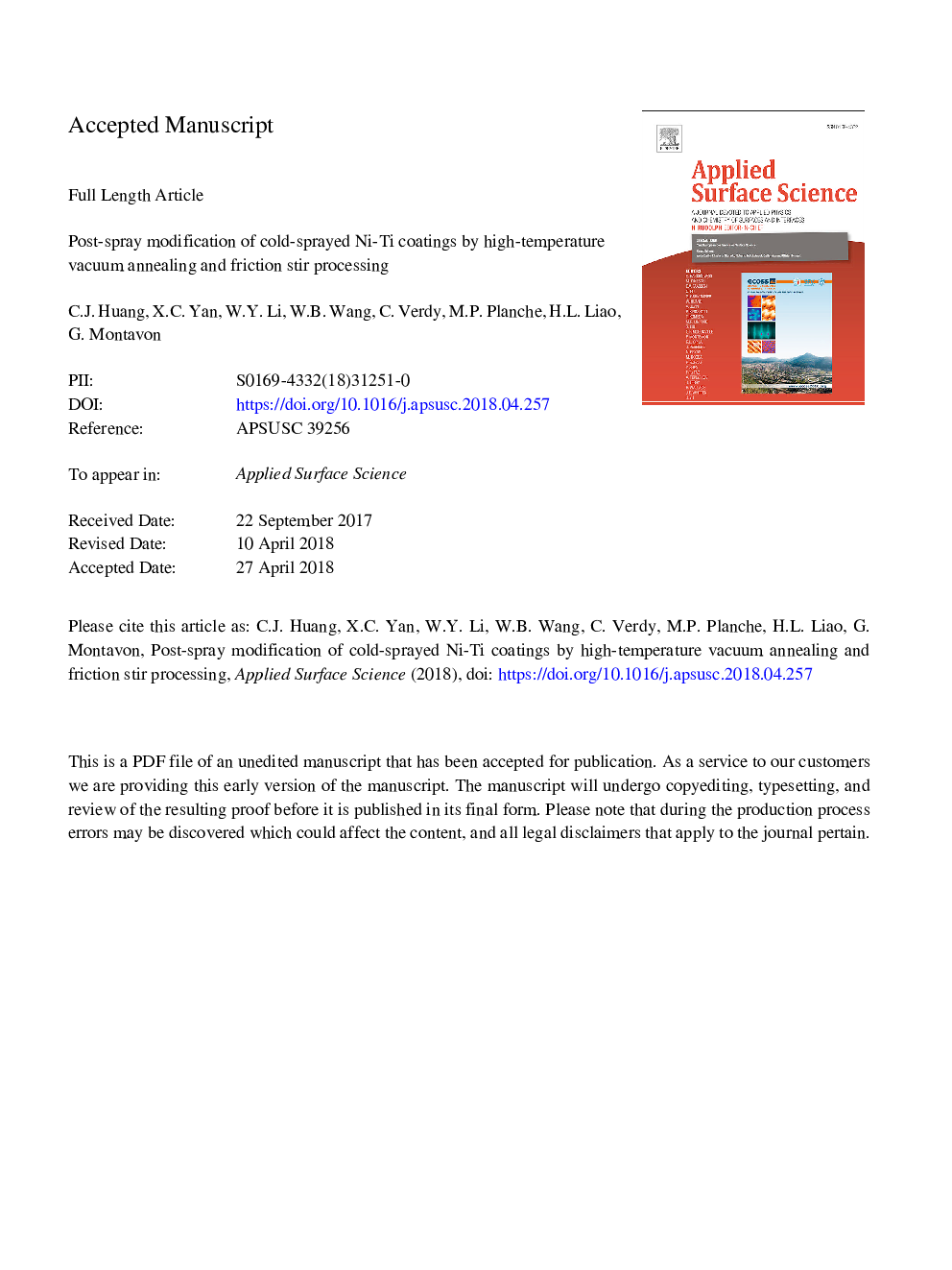| Article ID | Journal | Published Year | Pages | File Type |
|---|---|---|---|---|
| 7833418 | Applied Surface Science | 2018 | 28 Pages |
Abstract
In this study, two post-spray treatments, i.e. high-temperature vacuum annealing (HTVA) and friction stir processing (FSP), were employed to modify the cold-sprayed (CS) Ni-Ti coatings, obtained from a mechanically blended powder. The phase transformation occurred at different HTVA temperatures, but with the formation of pores due to the Kirkendall effect. FSP proved to provide a new opportunity for the formation of intermetallic phases in the CSed Ni-Ti coating. A comparison of the microstructures, microhardness and tribological behaviors between the CSed and FSPed coatings, reveals that the microstructure of the modified Ni-Ti coating exhibits a mechanically alloyed layer with the in-situ synthesized Ni-Ti intermetallics, and no obvious defects are found. The microhardness of the improved layer is increased to 1003.5â¯Â±â¯65.9 HV0.1, which is about 4.5 times compared to the CSed coating (222.5â¯Â±â¯6.6 HV0.1). In addition, the mechanically alloyed layer by FSP contains multiplicate Ni-Ti intermetallic compounds, exhibiting better wear resistance than that of the CSed coating, thus proving the effectiveness of FSP on the microstructural modification and properties improvement for the CSed metal-metal composite coatings.
Keywords
Related Topics
Physical Sciences and Engineering
Chemistry
Physical and Theoretical Chemistry
Authors
C.J. Huang, X.C. Yan, W.Y. Li, W.B. Wang, C. Verdy, M.P. Planche, H.L. Liao, G. Montavon,
